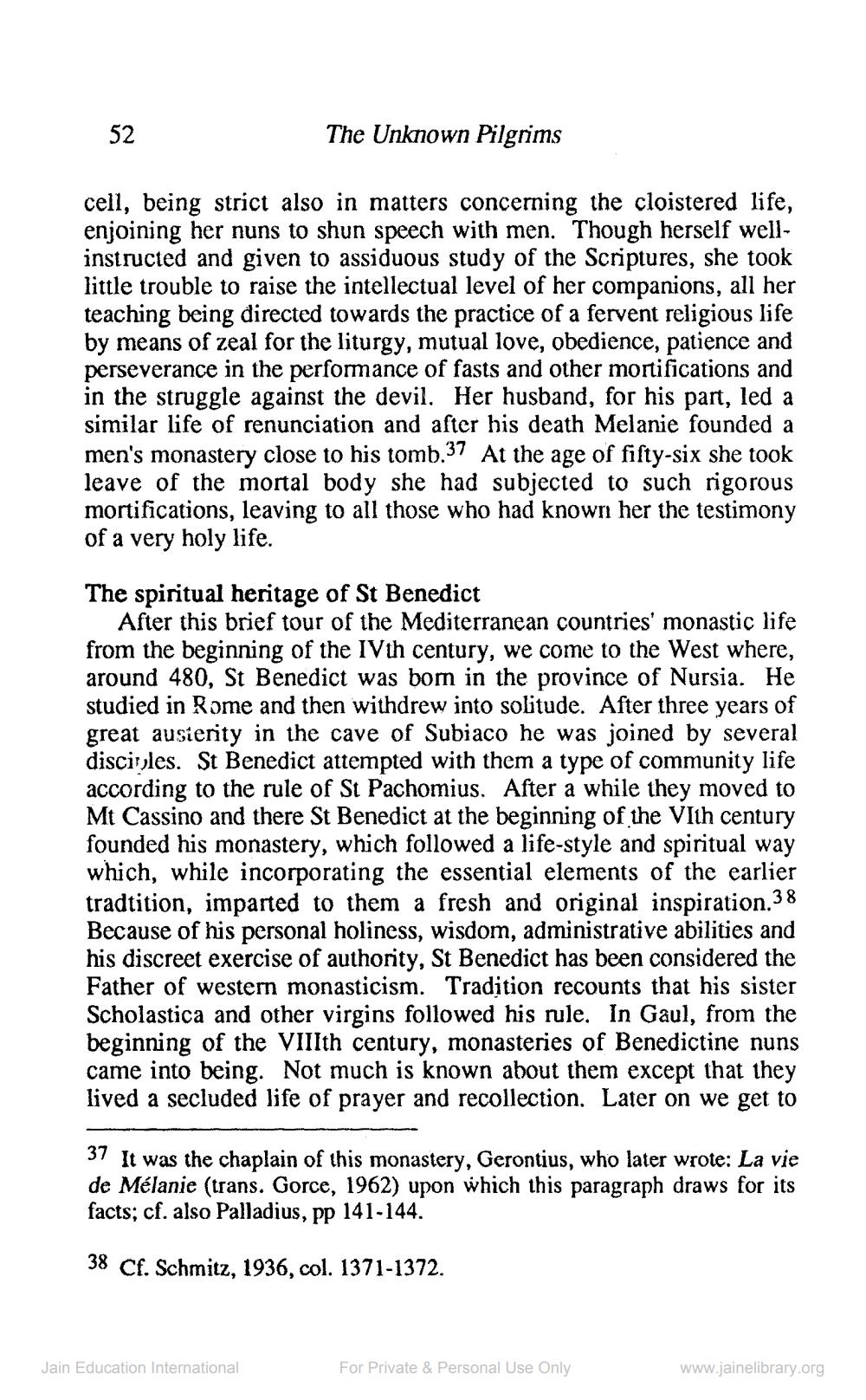________________
52
The Unknown Pilgrims
cell, being strict also in matters concerning the cloistered life, enjoining her nuns to shun speech with men. Though herself wellinstructed and given to assiduous study of the Scriptures, she took little trouble to raise the intellectual level of her companions, all her teaching being directed towards the practice of a fervent religious life by means of zeal for the liturgy, mutual love, obedience, patience and perseverance in the performance of fasts and other mortifications and in the struggle against the devil. Her husband, for his part, led a similar life of renunciation and after his death Melanie founded a men's monastery close to his tomb.37 At the age of fifty-six she took leave of the mortal body she had subjected to such rigorous mortifications, leaving to all those who had known her the testimony of a very holy life.
The spiritual heritage of St Benedict
After this brief tour of the Mediterranean countries' monastic life from the beginning of the IVth century, we come to the West where, around 480, St Benedict was born in the province of Nursia. He studied in Rome and then withdrew into solitude. After three years of great austerity in the cave of Subiaco he was joined by several disciples. Șt Benedict attempted with them a type of community life according to the rule of St Pachomius. After a while they moved to Mt Cassino and there St Benedict at the beginning of the Vlth century founded his monastery, which followed a life-style and spiritual way which, while incorporating the essential elements of the earlier tradtition, imparted to them a fresh and original inspiration.38 Because of his personal holiness, wisdom, administrative abilities and his discreet exercise of authority, St Benedict has been considered the Father of western monasticism. Tradition recounts that his sister Scholastica and other virgins followed his rule. In Gaul, from the beginning of the VIIIth century, monasteries of Benedictine nuns came into being. Not much is known about them except that they lived a secluded life of prayer and recollection. Later on we get to
37 It was the chaplain of this monastery, Gerontius, who later wrote: La vie de Mélanie (trans. Gorce, 1962) upon which this paragraph draws for its facts; cf. also Palladius, pp 141-144.
38 Cf. Schmitz, 1936, col. 1371-1372.
Jain Education International
For Private & Personal Use Only
www.jainelibrary.org




